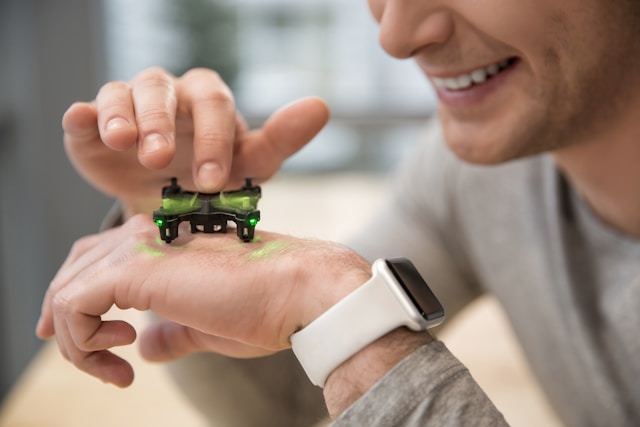In an age where tech moves at lightning speed, drones are seriously making their mark. These unmanned aerial vehicles (UAVs) aren’t just cool toys or limited to military uses anymore.
Nowadays, they’re vital across a bunch of sectors, turning the tide in agriculture, filmmaking, emergency response, and environmental tracking. Diving into the world of drones, we see their potential to flip industries on their head, amp up our capabilities, and redefine the limits of what we can achieve from the skies.
Revolution In The Air
Drones have transformed from basic remote-controlled planes to high-tech devices armed with AI, ready for self-guided missions and complex decision-making. A major leap in drone tech has emerged in the defence sector. UAVs have turned into critical assets for national security, delivering top-tier reconnaissance and backing without putting human lives in jeopardy.
For more information about military drones, click here. These drones bring strategic edges by providing intricate intelligence collection and backing essential tactical manoeuvres, showcasing the crucial role of UAV tech in today’s armed conflicts.
Tactical Drones
It’s not only the military that benefits from drone tech. Emergency services also find drones invaluable. Tactical drones improve response efficiency. Whether it’s managing hostage situations, coping with natural disasters, or orchestrating search and rescue operations, these UAVs deliver instant data, enabling quick and informed decision-making.
Tactical drones are equally pivotal in disaster management, where fast aerial surveys are critical for assessing needed responses.
More from Other
- Tyk Scales Up in US Financial Sector As Banks Lean On APIs As Revenue-Driving Infrastructure
- How Has Technology Been Changed By The Rise Of Cryptocurrencies?
- Go-to-Market UK Launches to Help Scaleups Break into the Market
- Study Finds Startups Using OKRs Reach $1 Million ARR Faster
- Opportunities and Challenges Of Online Casinos
- Music For Pets’ Latest Album “Dreaming Dog” Continues to Redefine Pet Audio for Dogs and Humans
- Purbeck Welcomes Government’s Crackdown on Late Payments: “Strengthened Legislation is Long Overdue,” Says MD Todd Davison
- How Technology Is Making Investing More Accessible To Everyone
Civil Applications Of Drones
Beyond their military and tactical applications, drones are making big waves in civilian sectors too. In farming, drones monitor crop health, apply pesticides, and assess fields to increase productivity and cut down on waste. The movie industry is also taking advantage of drones, using them for impressive aerial shots that used to require helicopters or cranes.
Moreover, drones are stepping up in wildlife conservation, tracking animal populations and spotting poachers without disturbing the ecosystems. Drones are even being used as delivery systems. They’re demonstrating their worth across various fields, proving their versatility and utility beyond just combat or tactical uses.
Navigating Challenges And Setting Regulations
Despite their advantages, the expansion of drones presents challenges, particularly regarding privacy, security, and managing airspace. Proper regulation of UAVs is essential as they become more widespread, making sure that these rules foster innovation rather than suppress it.
Governments globally are crafting policies that find the right balance between safety and advancement, aiming to make sure that drones improve our lives while protecting our rights and privacy.
Looking To The Future
The possibilities for drones are just starting to be tapped. With continuous improvements in AI, machine learning, and robotics, drones are growing more autonomous and becoming a regular fixture in our lives.
They promise to transform numerous industries, enhance public safety, and provide fresh perspectives on our surroundings. As we push forward with this cutting-edge tech, it’s evident that drones aren’t just hinting at the future; they’re actively moulding it.
As drones continue to advance and weave into our everyday lives, it’s vital to weigh their opportunities and their challenges. As they glide above us, they symbolise our boundless potential for innovation and the constant necessity to balance tech growth with thoughtful ethical and regulatory considerations.

